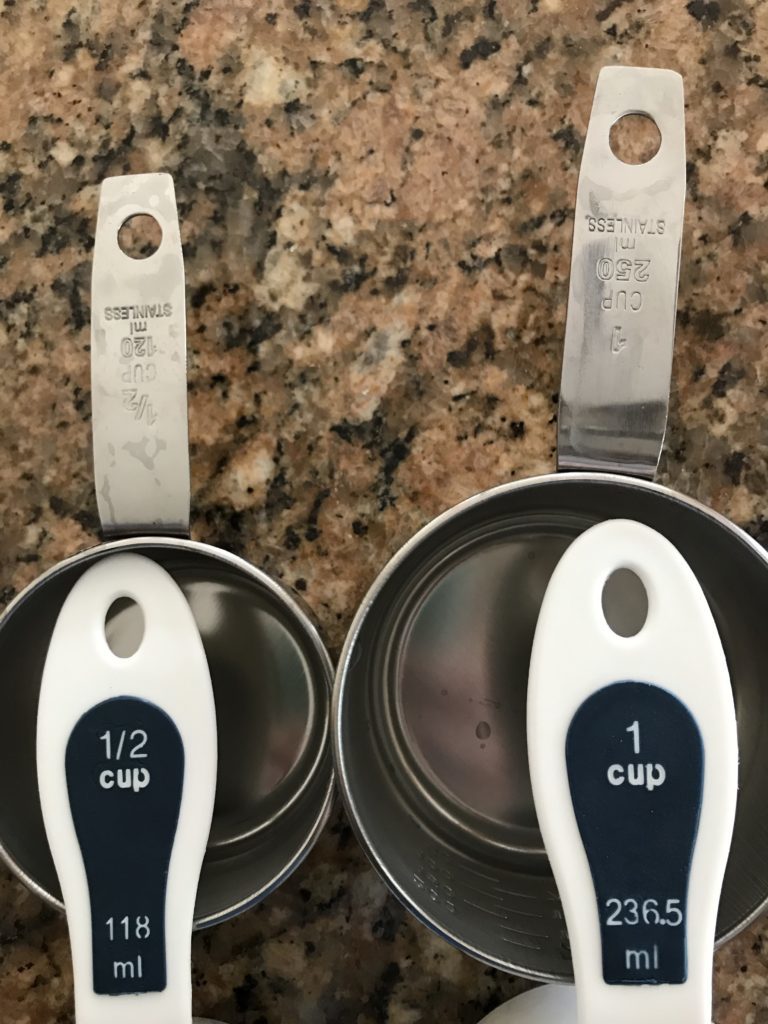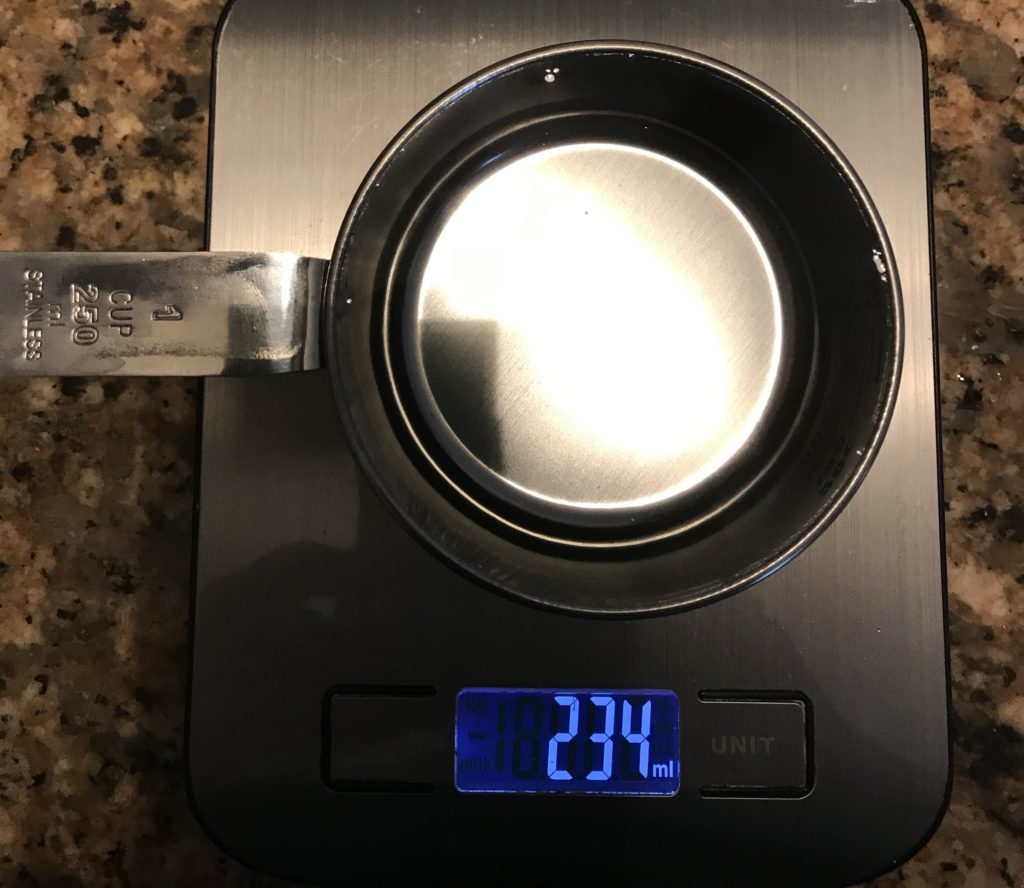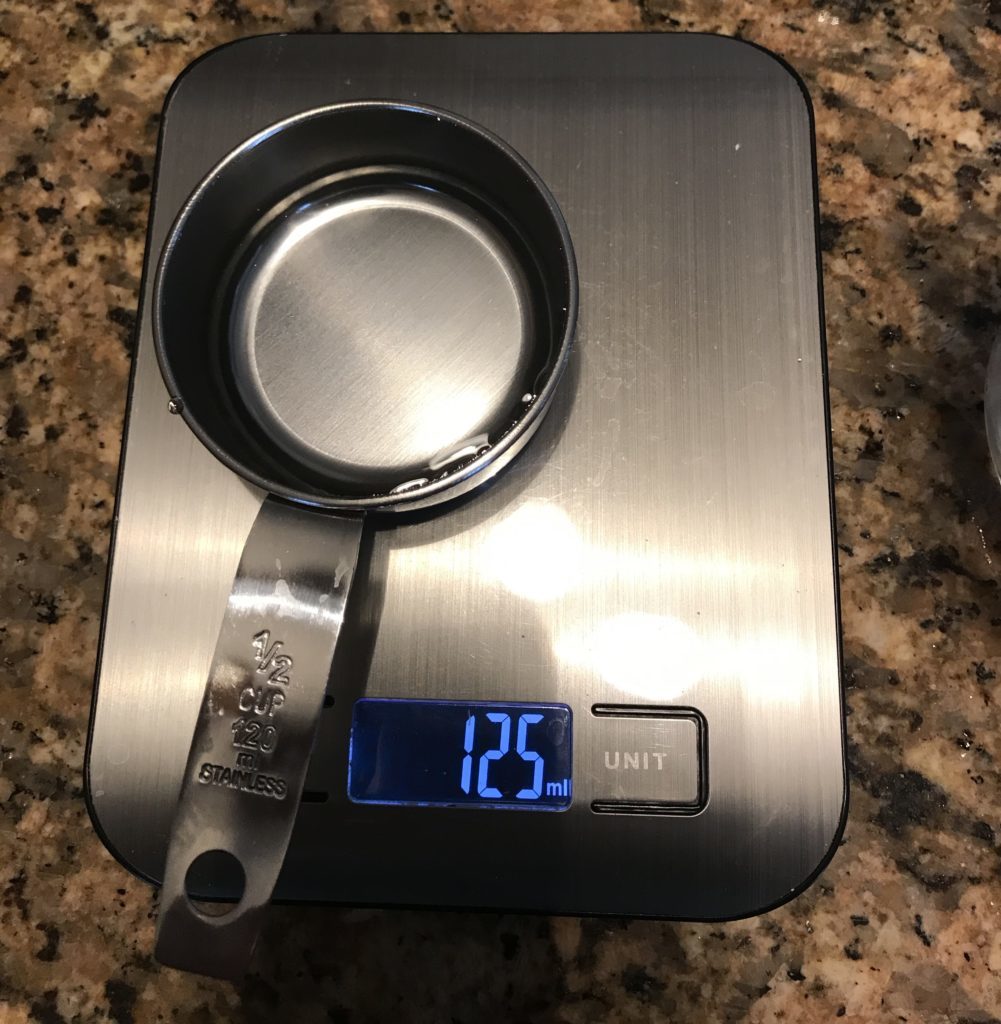If you want to get serious about baking, weigh ingredients for accuracy. It will take you from amateur status to rockstar overnight. When I first started baking, I would use cups and measuring spoons. But after a while, especially when I got into artisan bread-making and delicate desserts like macarons, I began to fail at recipes quite often, especially those from overseas.
I quickly learned weighing your ingredients gives you consistent results time and time again. Why? One reason could be the fact the recipe’s brand of flour weighs less to begin with and they sift the flour, sprinkling it in whereas I bulldoze it and stomp on it with my feet. But another unexpected reason? The measuring cup sitting in your cupboard could be completely wrong.
For example, look at these two sets below. The metal is a metric based on 250mL one cup measurements, the plastic is American based on 236.588mL measurements. However, neither is accurate! I tared the scales and filled it to the brim with water.
Neither held the amount of mL they claimed. And between the two, some were off more than 20 mL. This doesn’t sound like much until you think about how 1 teaspoon is 5mL and what if you put in 20mL of extract when you should have used 1mL? That could break your recipe! Dry ingredients are a little more forgiving which these types of measuring cups are meant for, but not always. Some finicky French cuisines rely on every gram to turn out just right.
So what do you do to ensure you always have the perfect amount? Use weights. And if you can’t or won’t bring yourself to do that, always use the same set of measuring cups and be consistent with your measuring style.
For instance, if a recipe asked for 2 cups of flour, don’t heap up one cup and level the other with a knife. In cooking, absolutely you have room for a little of this and a little of that. In baking, it’s more scientific and a little of this and little of that can completely ruin your dessert. So weigh ingredients for accuracy and be the next Mary Berry.






0 Comments